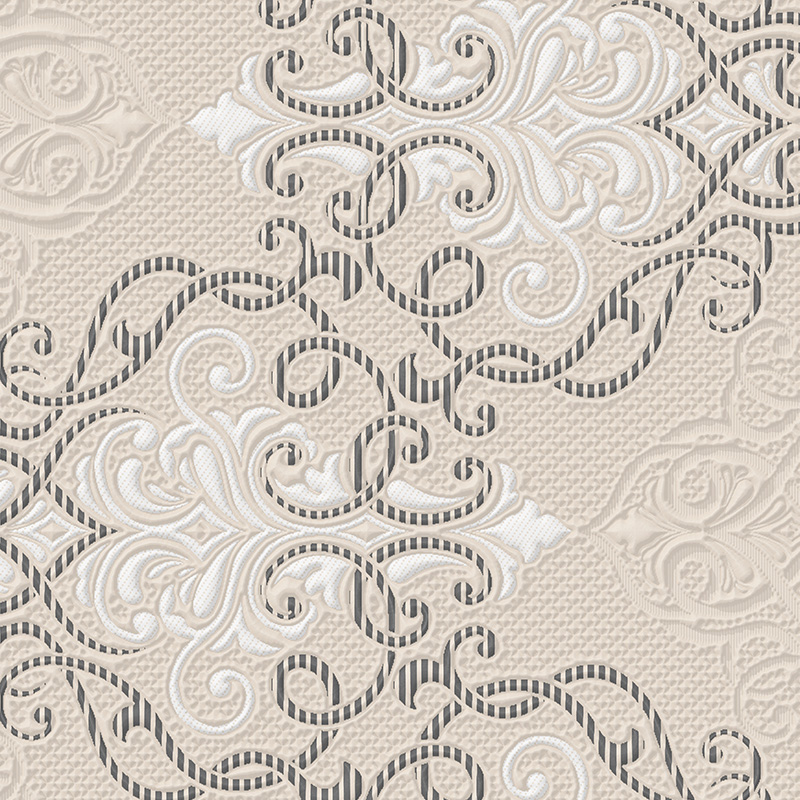At its core, polyester knitted fabric is made from polyester fibers, which are derived from petroleum-based products. These fibers are then spun into yarns and knitted together to create a fabric that is both flexible and resilient. Unlike woven fabrics, which are created by interlacing threads at right angles, knitted fabrics are formed by looping yarns together. This looped structure gives polyester knits their characteristic stretchiness, making them ideal for garments and applications where flexibility is key.
The Production Process
The journey of polyester knitted fabric begins with the creation of polyester fibers. These fibers are typically produced through a process called polymerization, where raw materials like ethylene glycol and terephthalic acid are combined to form long chains of polyester. These chains are then melted and extruded into fine filaments, which are spun into yarn.
Once the yarn is ready, it undergoes the knitting process. There are two main types of knitting techniques: warp knitting and weft knitting. Warp knitting involves creating loops in a vertical direction, resulting in a more structured and stable fabric. Weft knitting, on the other hand, creates loops horizontally, producing a softer and more elastic fabric. The choice between these techniques depends on the intended use of the fabric.
After knitting, the fabric may undergo additional treatments such as dyeing, printing, or finishing to enhance its appearance, texture, or performance. These processes can add features like moisture-wicking, anti-static properties, or UV resistance, further expanding the fabric's utility.
Key Properties of Polyester Knitted Fabric
One of the standout features of polyester knitted fabric is its durability. Polyester fibers are inherently strong, resistant to abrasion, and capable of maintaining their shape even after repeated use. This makes the fabric an excellent choice for items that need to withstand wear and tear, such as sportswear, backpacks, and upholstery.

Another advantage is its resistance to wrinkles and shrinking. Unlike natural fibers like cotton or wool, polyester knits retain their smooth appearance and dimensions over time, reducing the need for frequent ironing or special care. This low-maintenance quality has made polyester knitted fabric a favorite among consumers who value convenience.
Moisture management is another area where polyester excels. While polyester itself is not absorbent, modern innovations have enabled the creation of moisture-wicking fabrics that draw sweat away from the skin and allow it to evaporate quickly. This feature is particularly beneficial for athletic wear, ensuring comfort during intense physical activities.
Additionally, polyester knitted fabrics are lightweight and breathable, making them suitable for a variety of climates. They can be engineered to provide insulation in cold weather or ventilation in warmer conditions, offering year-round usability.
Applications Across Industries
The adaptability of polyester knitted fabric has led to its widespread adoption across multiple industries. In fashion, it is commonly used for activewear, swimwear, and casual clothing due to its elasticity and ability to retain vibrant colors. Designers also appreciate its affordability, allowing them to experiment with bold patterns and textures without breaking the bank.
In the realm of home textiles, polyester knits find their way into items like blankets, cushion covers, and curtains. Their resistance to fading and easy-care nature make them practical choices for busy households. Moreover, advancements in technology have enabled the development of flame-retardant and stain-resistant variants, enhancing safety and longevity.
Beyond consumer goods, polyester knitted fabrics play a role in technical and industrial applications. For instance, they are used in filtration systems, geotextiles, and protective gear due to their strength and chemical resistance. In healthcare, they serve as components of compression garments and medical bandages, thanks to their elasticity and breathability.